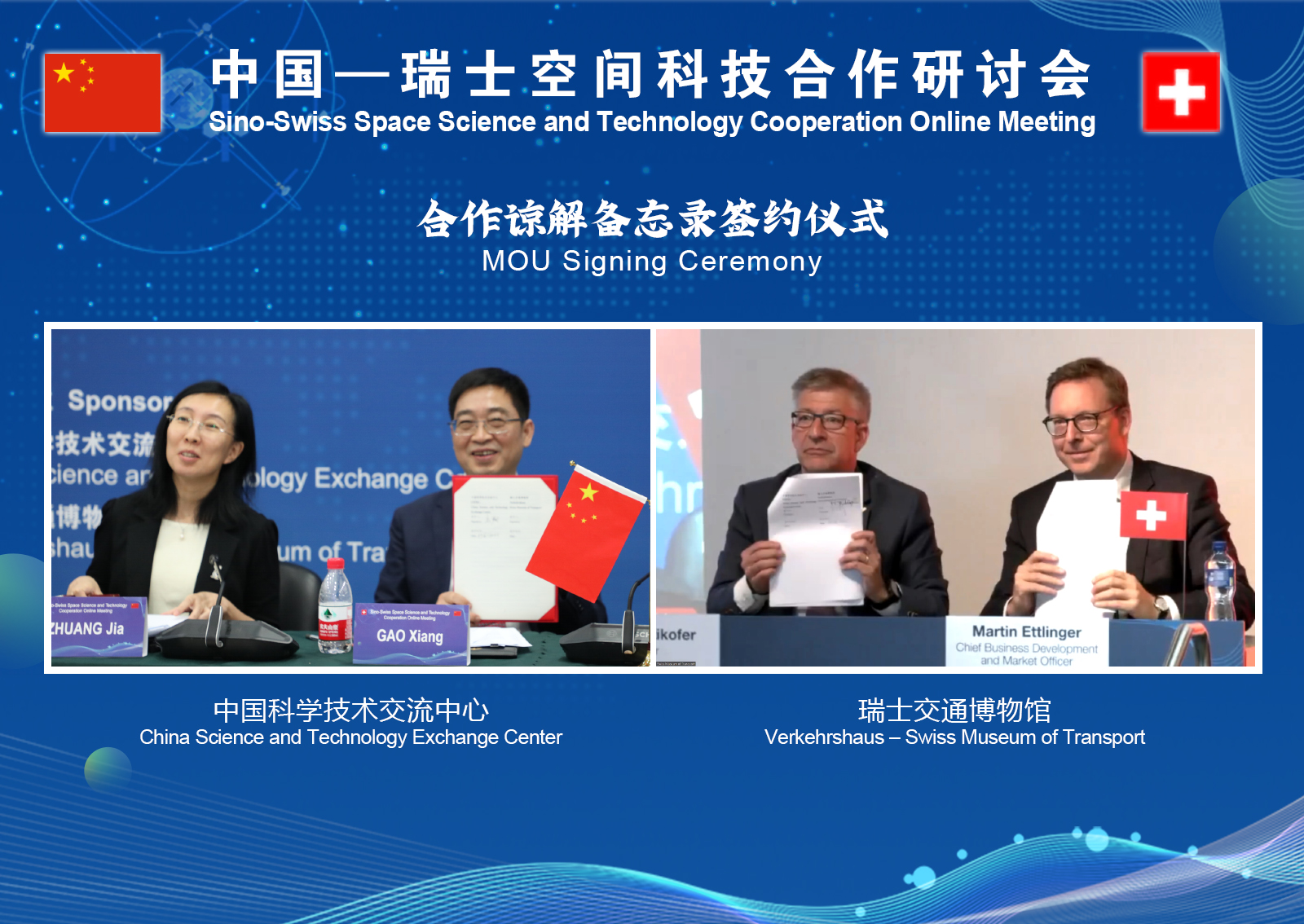
The CSTEC and Verkehrshaus signed a MOU at?the?Sino-Swiss Space Science and Technology Cooperation Online Meeting?on June 30. (PHOTO: CSTEC; Handout via Science and Technology Daily)
By?WANG Xiaoxia
An online meeting on cooperation in space science and technology was held on June 30, where scientists from China and Switzerland shared information on new advances in this field.
The meeting, co-hosted by China Science and Technology Exchange Center (CSTEC) and Swiss Museum of Transport (Verkehrshaus), provided an opportunity for researchers, astronauts and students to share experience and exchange ideas amid the global COVID-19 pandemic.
In the rise of global challenges and uncertainties, to promote sci-tech advances and sustainable development benefitting all humankind is the common issue faced by scientists worldwide, said Gao Xiang, director general of CSTEC, during his opening remarks.?
The two countries' universities, research institutes and enterprises have maintained close ties in the field of space research and made a number of achievements, said Gao.
For example, Polar, the device designed by Swiss scientists was installed on China's Tiangong-2 space station to observe gamma-ray bursts in space. Using data from Polar, experiments were carried out by Chinese and Swiss scientists, laying a solid foundation for advanced cooperation in the future.
The space section is one of the museum's highlights, said Martin Bütikofer, Director of Verkehrshaus, adding it will exhibit objects and models of Chinese space vehicles, and perform as a platform for exchanges between Chinese and European space researchers and astronauts.
At the meeting, scientists from the two countries have also introduced the cutting-edge technologies and cooperative projects in terms of crewed space missions, Mars exploration, extreme universe exploration, satellites, solar irradiance, 3D-printing in space and space materials.
With construction of China's space station, a 3D-printing manufacturing factory aboard the station will be open to international scientists, said Wang Gong, researcher from the Chinese Academy of Science.
Two legendary astronauts, Jing Haipeng, Chinese astronaut who has undertaken three space missions, and Claude Nicollier, Switzerland's first astronaut and a veteran of four space flights, had a dialogue via video link, sharing their experience in space, and answering questions from college students.
Jing hopes that more students would dedicate themselves to space research, and invites more international astronauts to visit China's space station upon its completion.
Nicollier said he was also looking forward to more cooperation in space exploration.
The CSTEC and Verkehrshaus signed a memorandum of cooperation, providing an open platform for universities, institutions, scientists in the field of space science to carry out concrete cooperation, as well as strengthening mutual understanding of the public by carrying out a series of science popularization activities in the future.
The trio will conduct a series of experiments in fields such as life science, fluid physics, combustion science and materials science. Notably, this is the first time that fruit flies have been taken on a Chinese space mission as experimental subjects. What made scientists choose fruit flies? What experiment will they undergo?
